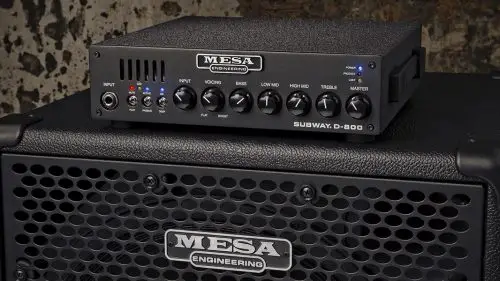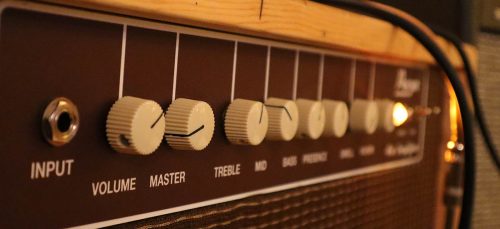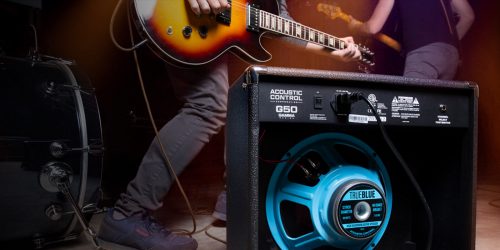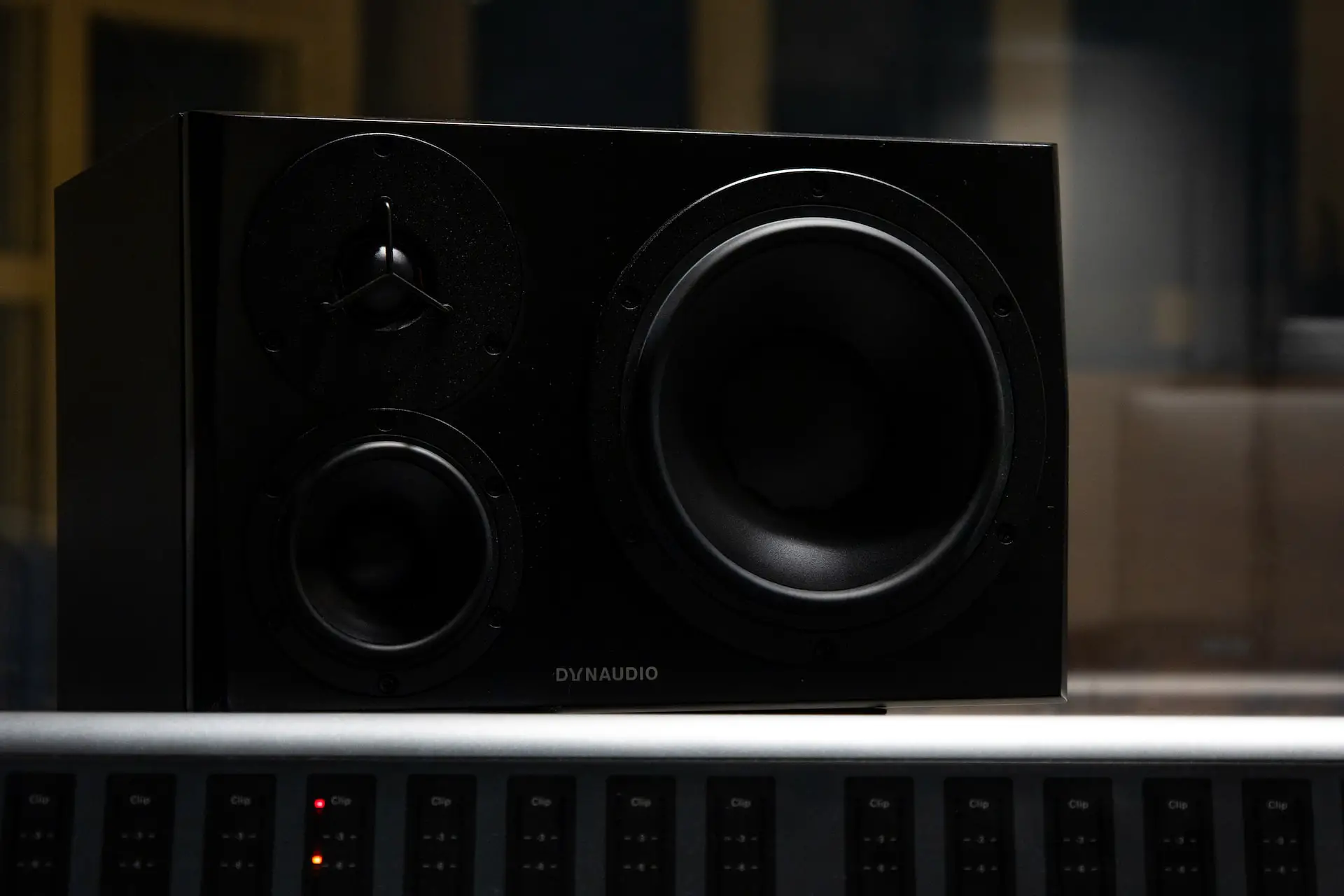Lower ohms speakers are louder. They are also more easily subjected to the effects of amplification. Amplification in electrical terms is the process of increasing the volume of the sound of your guitar playing.
This is why your average guitar amplifier has approximately four, eight, and sixteen ohms. Hence, the guitar amplifier is incredibly loud.
As someone who has played guitar and bass for over seven years, I wish I had known additional information about the electrical components and ohms of my speakers and amplifiers when I first started playing.
Once you better understand ohms and impedance, you will better understand how your amplifier works and be more knowledgeable on how to upgrade its components, such as its speakers.
Many guitar players will find it unnecessary to pay attention to electrical theory and feel that it is too difficult to understand.
Many guitar players would instead focus on playing their guitar and getting better at it. However, these concepts are not nearly as challenging to understand as many people think.
When going through this article, we will cover information regarding impedance (which is more specifically measured in ohms, with a specific number assigned to them).
The higher the number of ohms, the higher the impedance. This article will also explain ohms and resistance and how these matter regarding your electric guitar amplifiers and speakers.
This article will also cover some general information regarding ohms and impedance that will be laid out in an easy-to-understand manner.
A lot of electrical theory goes into these explanations, but we will break it down in an easy-to-understand manner.
We will also review differences in higher and lower ohms including things like power consumption, sound quality, volume and more.
How Does Impedance Work?

The impedance exists within the electrical components of an electrical device that is guitar amplifier
Since there is a lot of information to cover in this article regarding how impedance (aka electrical resistance) works, please refer to the graphic below.
It shows the impedance (resistance) that exists within the electrical components of an electrical device, such as a guitar amplifier.
The electricity has to push harder to get through a barrier of more resistance than it does with less resistance (resulting in higher impedance).
The resistance is necessary to protect the electrical components. Imagine that there was a higher voltage amplifier with higher ohms trying to power a speaker with lower ohms.
The electrical current would be too powerful, and the risk of damaging the speaker would be too high. The amp or the stereo needs some resistance to ensure that its internal circuitry is not completely fried.
Electricity is a current flowing between the internal electrical components and the wiring of an internal device.
Ohms are the electrical resistance units of the electrical current flowing through those said components.
When said electrical component has high resistance, then that is also referred to as having a high impedance.
Impedance is the term used to describe if an electrical device has high ohms or low ohms. A device with higher ohms has a higher impedance, and a device with lower ohms has a lower impedance.
There is some electrical resistance to all electrical equipment. This is required for the protection of the electrical equipment.
Speakers are not different – they need to have a certain amount of resistance or ohms to them so that they are protected and do not get blown out. Guitar amplifier speakers are no exception.
Higher Ohms Vs. Lower Ohms: The Differences
| Difference | High Ohm (High Impedance) | Low Ohm (Low Impedance) |
| Power Consumption | Higher | Lower |
| Sound Quality | Better | Worse |
| Sound Volume | Softer | Louder |
| Cost | More expensive | Less expensive |
| Use Case | High power source devices like mixing boards. | Low power source devices like mobile phones. |
Ohms are defined as the electrical resistance in an electrical circuit. Therefore, higher ohms will have a more significant amount of resistance, whereas lower ohms will have a lower resistance rate.
It is crucial that a speaker with lower ohms does not take electrical input from an amplifier that has higher ohms (the result of this would be that the speakers could not handle the additional voltage the amplifier would push through the lower ohm speakers, thus destroying them).
If your speakers can take an ohm output of 6 and your amp is outputting ohms of 8, you can blow out your speakers.
In this section, I will go into detail on the difference between high ohm and lower ohm on speakers.
Power Consumption: High Vs. Low Ohm
Things with lower ohms usually consume less power. Things with higher ohms typically consume a lot more power to function correctly.
The power supplied by something small like an MP3 player is relatively low (and the tiny speakers in the earbuds are relatively small as well), so you could get away with headphones that are low to midrange in ohms.
Headphones of higher ohms, such as the type you would need in a recording studio, require much higher ohms. A small electrical device would not have the power necessary to produce a high-quality audio sound.
Sound Quality: High Vs. Low Ohm
The sound quality from speakers with higher ohms is much better than that of lower ohm speakers.
Speakers with higher ohms have a more comprehensive range of frequencies and sound quality. Here is a simple way to explain it in more detail:
Think of your cell phone. It most likely has a small headphone jack that you can plug into (even though almost everyone has Bluetooth these days, but that’s another story). You could easily plug in a headset and have pretty decent sound quality.
This is because these headphones have very low ohms and can easily be driven by the power from your cell phone.
However, if you plug those same wired headphones into a high-quality stereo system, you will most likely find the sound quality more distorted and probably a bit louder.
There is also a possibility of damaging them (information to prevent this will be discussed later in this article.
However, if you plug higher-ohm headphones into your high-quality stereo system, you will have a much more precise and higher-quality sound.
Take that same high-ohm headset and plug it into a lower-powered device such as your cell phone, and you will find that the sound quality is lower and a bit tinny.
It may not even be barely audible. This is because higher ohm speakers will need more electrical power to achieve their best performance.
If you are in a recording studio, you would want headphones with the highest ohms possible for the high-end mixers and such that you would plug into.
This would yield the greatest sound quality as well. The higher the ohms for headsets in this scenario, the better the quality.
Volume: High Vs. Low Ohm

lower ohms speakers are more louder as compare to the higher one
Lower ohms speakers are louder. They are also more easily subjected to the effects of amplification.
Amplification in electrical terms is the process of increasing the volume of the sound of your guitar playing.
This is why guitar amplifiers have such low ohms to create the loudest possible sound. The higher impedance or electrical resistance causes the higher volume.
Costs: High Vs. Low Ohm
Regarding amplifier speakers, the lower the ohms of your speaker, the lower the financial cost.
This is because less power is required to power the speakers with the lower ohms correctly. The lower ohm speakers also do not have the same sound quality.
However, this is only sometimes the case. Certain brands may go for a higher cost based upon other quality factors of the speaker as well.
Use Cases: High Vs. Low Ohm

You should go for the high ohm speaker when you have a higher power source. For example, you would want high-powered ohm headphones plugged into a higher-power source, such as a recording mixing board.
You would also be suitable for a higher ohm speaker when you have a higher ohm amplifier (this will prevent you from blowing out your speakers).
Lower ohm speakers are suitable for amplifier sources with lower ohm sources. They are also ideal for lower-powered sources (for example, think of how a lower-powered device like a cell phone requires a lower-ohm headset.
The less power lost from the source to the speaker, the more power can be used for volume and low-frequency bass control.
Which Is Better for Speakers: High Vs. Low Ohm

Both have their own specific high and low ohms which they are better at
Both high and low ohms have their specific use cases which they are better at. Majority of consumers will benefit from low ohm speakers because they are cheaper and used with portable devices like phones.
Whereas higher ohm speakers are used in more professional usages in recording studios and they are more expensive. That said, higher ohms produce a higher quality of sound with more advanced sound ranges.
The higher the number of ohms, the less power is lost in the transmission from the amplifier (the source) to the speaker.
The additional power saved helps to power the speaker and provide a higher quality of bass and overall sound.
How To Measure Impedance (Ohm)?
You should be able to measure the impedance in ohms of your speakers and your other electrical devices by reviewing the owner’s manual.
However, feel free to follow these seven steps to measure the impedance of your electrical components:
1. Check the label
Check the nominal impedance rating on the speakers (this should be on the electrical label on the back of the amplifier and/or the speakers). Nominal impedance ratings on amplifiers and speakers are rated at 4, 8, or 16. The Hz for these ranges runs between 250 Hz to 400 Hz.
2. Get a Multimeter
Set a multimeter to ensure resistance. Although this will give a less accurate reading since impedance is a quality that comes from AC circuits, it will get us close enough for measuring in guitar amplifiers.
From here, use the lowest setting on the multimeter. For many multimeters, the average amount of ohms is 200, but one with a lower setting of 20 will provide a more accurate reading.
3. Removing the speakers (if necessary).
Remove the speakers from the cabinet. Make sure not to lose any needed screws or clips in the process (it may be a good idea to ensure that you are placing them in a small plastic bag or tape them to the cabinet to avoid losing them).
4. Remove the power source
Cut off any power source to the speaker. Any power from the power source could ruin your measurement or fry your multimeter. Please do not remove any other wires connected to the speaker cone.
5. Connect the terminals.
Connect the multimeter to the speakers’ terminals. The (+) will mark positive, and the (–) will mark negative.
Your multimeter should have a red wire for positive and a black wire for negative (check the manual on your multimeter to ensure you are connecting the correct wire for positive and negative).
6. Take 15% off
The speaker’s impedance is approximately 15% less than the number shown on the multimeter. For example, a 16-ohm speaker should show approximately 13.6 on the multimeter. (16 *.15 = 2.4). 2.4 subtracted from 16 comes to 13.6.
7. Reconnect the power supply
Reconnect the power supply to the speakers and install the speakers back into the cabinets if needed. (Hopefully, you remembered to secure the screws and clips in a place you will not forget!)
FAQs
Is 6 or 8 Ohm Better? (For Speaker)
Regarding ohms for speakers, it is always better to go with the higher number, which is eight.
Higher Ohm speakers can absorb a higher electrical output from your guitar amplifier. So in this case, an 8 ohm speaker is better than 6.
It is safer to err on the side of caution and have speakers with ohms that are higher than lower, as the lower ohm speakers are in more danger of being blown out than the higher ohm speakers.
Are 8 Ohms Good for a Speaker?
Most speakers made today are between six to eight ohms. Eight ohms is good to play through, so long as the amplifier does not exceed eight ohms. Eight ohms, a higher number than six, would lead to a better option with better sound quality.
Which Ohm Is Best for Subs?
Four ohms are best for subwoofers. This provides bass at a moderate volume and in the best quality. The lower resistance of these ohms allows for a more significant deal of bass as well.
The lower the resistance of this number, the less energy they will use. This means they are more likely to last longer than speakers of higher ohms or higher impedance as well.
Can You Mix Speakers with Different Ohms?
You can mix different ohms in your speakers so long as you do not go to a lower ohm speaker than the ohms of your amplifier.
For example, a 16-ohm amplifier has the potential to blow out an 8-ohm speaker quickly. However, an amplifier of 8 ohms has no danger of blowing out a 16-ohm speaker.
Conclusion
The chart below summarizes the information in this article, such as where and how lower impedance speakers (meaning they have lower ohms) and higher impedance speakers (meaning they have higher ohms) compare and contrast with one another.
This chart here also summarizes in detail how the different levels of impedance will affect how you may sound:
| Low impedance speaker | High impedance Speaker | |
| Electricity use | Uses electricity less efficiently. Consumes more power. | Uses electricity more efficiently. Consumes less power. |
| Volume | Higher Volume | Lower Volume |
| Bass | Less Bass sound | More Bass sound |
| Cost | Lower cost | Higher Cost |
| Sound Quality | Lower | Higher |
| Higher Ohm Amplifier | Bad option (potential speaker damage) | A better more compatible option |
| Lower Ohm Amplifier | Good option | Ok option |
Although this goes into a bit of electrical science and such, it is a good idea to familiarize yourself with the electrical components of your guitar amplifier to have the best sound and tone out of your guitar amplifier speakers. Not to mention keeping your speakers safe.





